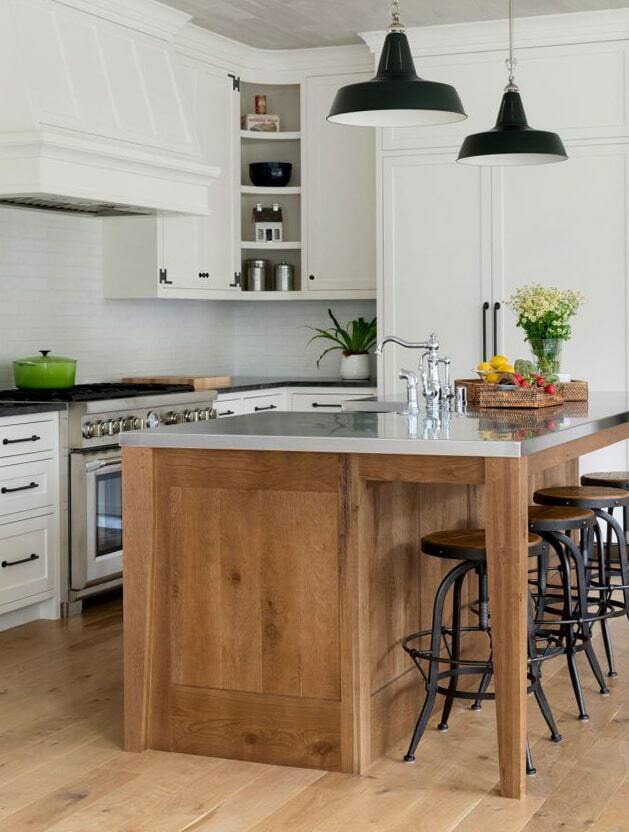A Comprehensive Overview to Choosing the Right Kitchen Island Leg
A Comprehensive Overview to Choosing the Right Kitchen Island Leg
Blog Article
The Relevance of a Sturdy Kitchen Island Leg in Developing a Useful Cooking Location
A sturdy kitchen area island leg serves as a fundamental component in establishing a practical food preparation environment, supplying needed support for both the counter top and various kitchen area activities. As cooking areas evolve into multifunctional locations for food preparation, dining, and interacting socially, the selection of products and style considerations for island legs ends up being increasingly important.
Benefits of Sturdy Island Legs
Giving crucial support, strong kitchen area island legs play a pivotal role in improving the performance and toughness of kitchen area islands - kitchen island leg. These legs not just birth the weight of the countertop and any type of added items positioned on the island, yet additionally contribute to the total stability of the framework. A well-supported kitchen island makes certain that it remains upright and practical, also under hefty usage, which is especially vital in busy kitchen settings
Furthermore, strong island legs can improve the visual appeal of the kitchen. They supply a solid structure that can match different design styles, from modern to traditional. This convenience allows property owners to personalize their cooking area islands according to personal preference while guaranteeing that the structural stability remains uncompromised.
In enhancement to their helpful role, durable kitchen island legs can also enhance safety. A secure island reduces the danger of accidents brought on by tipping or tottering, which is especially critical in families with youngsters or senior individuals. Solid legs can facilitate a seamless circulation of tasks, enabling for reliable meal preparation and social communications within the cooking area area. Eventually, spending in tough cooking area island legs is vital for a practical and aesthetically pleasing cooking area.
Materials for Cooking Area Island Legs
When selecting materials for cooking area island legs, toughness and aesthetic allure are essential elements to consider. The most typical products consist of hardwood, steel, and engineered timber, each offering special benefits.
Wood, such as oak, maple, or cherry, is a traditional choice due to its strength and ageless beauty (kitchen island leg). It can endure substantial weight and is resistant to wear, making it optimal for high-use kitchen area atmospheres. Furthermore, hardwood can be stained or repainted to match numerous cooking area styles
Metal legs, usually crafted from stainless steel or functioned iron, offer a modern and commercial look. They are unbelievably strong and can sustain substantial tons while being resistant to wetness and warmth, which is useful in a cooking location. Steel legs can also be conveniently cleansed, boosting their functionality.

Layout Considerations for Security
The selection of materials for cooking area island legs directly influences the design factors to consider for stability. When developing a kitchen area island, it is extremely important to review the anchor weight-bearing capacity of the chosen materials. Larger materials, such as strong wood or metal, commonly give better stability, specifically under the anxiety of everyday usage.
Furthermore, the leg layout must integrate correct geometry to boost stability. A wider base enhances the assistance area, decreasing the threat of tipping or tottering. Factor to consider should also be provided to the elevation of the legs; out of proportion leg sizes can cause inequality, compromising the overall security of the island.
Moreover, the distribution of weight across the island is essential. Making sure that the leg placement aligns with the heaviest parts, such as devices and counter tops, will additionally improve security.
Upkeep Tips for Durability

Cleaning up is one more crucial aspect of upkeep. Depending on the material of the legs-- whether timber, steel, or composite-- ideal cleansing methods must be used. For wooden legs, a gentle clean with a damp cloth and a suitable timber cleaner will assist maintain their coating. Steel legs might call for a light polish to protect against corrosion and maintain their luster.
If the kitchen area island experiences heavy usage, consider strengthening the legs with added braces or sustains check here to enhance longevity. By complying with these upkeep tips, home owners can guarantee their kitchen area island legs continue to be practical and robust for years to come.
Choosing the Right Leg Style
Regular maintenance makes sure that kitchen island legs continue to be durable and useful, yet picking the appropriate leg design is equally crucial for both appearances and support. The option of leg style can dramatically influence the total style and harmony of your cooking area.

Performance is one more important facet. Thicker legs or those with a durable base can support larger countertops and tools, improving the island's utility. Conversely, slim legs might develop an airy look, appropriate for lighter layouts but possibly much less encouraging.
Verdict
In recap, the relevance of tough kitchen island legs can not be overemphasized in the production of a practical cooking location. These legs give necessary support, boost stability, and contribute to the total visual of the kitchen. By thoroughly selecting appropriate products and layouts, as well as applying correct upkeep practices, the longevity and efficiency of kitchen area islands can be guaranteed. Ultimately, buying robust island legs is essential to accomplishing a effective and risk-free cooking setting.
A tough cooking area island leg serves as a basic element in developing a useful food preparation atmosphere, supplying essential support for both the countertop and different kitchen activities.Supplying crucial support, strong cooking area island legs play a crucial duty in improving the capability and toughness of kitchen islands. Eventually, investing in tough kitchen island legs is essential for a practical and visually pleasing cooking location.
Factor to consider needs to likewise be given to the height of the legs; out of proportion leg lengths can lead to inequality, compromising the overall stability of click to read the island.
Wood legs supply warmth and a classic appearance, while steel legs provide a commercial and modern-day feel.
Report this page